Climbing roses are roses with long creeping or hanging shoots, for the growth of which support is absolutely necessary. Among them there are roses that bloom once a year, as well as remontant ones, that is, they bloom many times.
Description of climbing roses
Climbing roses have shoots that are several meters long.The flowers are white, pink, red, yellow from 2.5 to 9 cm, from single to semi-double, odorless, collected in inflorescences. Flowering is long-lasting and begins in June.
When describing climbing roses, it should be noted that they occupy one of the leading places in vertical gardening, go well with small architectural forms, and are indispensable for creating decorative columns, pyramids, arches, trellises, green decoration of building walls, balconies, and gazebos.
There are many varieties of climbing roses, the description of which will take a lot of time and space. However, according to the nature of their growth, these roses can be divided into three groups:
- Curly - from 5 m to 15 m high.
- Climbing height - from 3 m to 5 m.
- Semi-climbing in height - from 1.5 m. - 3 m.
The formation of shoots in climbing roses is continuous, due to which the flowering and budding phases are very extended. The total flowering duration is from 30 to 170 days. Among the repeat-blooming roses, the group of large-flowered roses, or Climings, stands out for its decorativeness.
Growing climbing roses
Choosing a place for planting and growing. For growing, you need to choose sunny and ventilated places. Roses are light-loving plants, so it is best to plant them on walls and supports with southern and southwestern exposure. Preference should still be given to southern exposure; good lighting helps the growth to ripen, which will flower next year.
Groundwater should be no higher than 70-100 cm, optimally 100-150 cm. It will not be possible to grow these flowers in swampy, damp places prone to flooding.
When choosing a place to plant, be sure to think about how you will lay the plants on the ground for shelter for the winter.Climbing roses grow to a height of more than 2.5 m. When laid out for the winter, they should not “cover” other plants that do not require shelter.
What kind of soil should it be? To grow climbing roses, you need fertile, loose, moderately moist soil with a fertile layer of at least 30 cm. And so, in the place of the future rose garden, it is necessary to prepare the soil: for this purpose it is better to use rotted manure (cow), if the soil is too heavy, you need to add sand, peat, which will give the soil looseness.
Selection of seedlings. The seedling should have 2-3 well-ripened lignified shoots with green, intact bark and a developed root system with many thin roots (lobe). The root collar of a seedling at the age of 1-2 years looks like a slight thickening separating the wild rootstock and the stem of the cultivated plant.
Planting climbing roses
When is the best time to plant roses? In central Russia, it is preferable to plant roses in the fall from September to the end of October, or early spring from mid-April to late May. In autumn, plants must be planted 2 cm deeper than in spring (total depth 5 cm), so that the shoots of planted roses do not dry out and suffer from the approaching cold, they are covered with earth and sand to a height of 20-25 cm. When the temperature drops to sub-zero temperatures, the plants shelter for the winter.
Preparing for landing. Seedlings with an open root system are soaked in water a day before planting. Leaves are removed from the shoots and immature and broken shoots are cut out with sharp pruning shears. The above-ground part is shortened to 30 cm, long roots are also cut off - up to 30 cm, cutting out rotten roots to a healthy place. The buds located below the grafting site are removed - wild shoots will develop from them.Seedlings are disinfected by dipping in 3% copper sulfate.
Landing. Planting pits are prepared measuring 50 × 50 cm, the distance between plants should be at least 2 - 3 meters. When planting, do not bend the roots of the plants too much. They should be laid out freely in the hole so that they go to the bottom, without bending upward, and the seedlings should be held at such a height that the grafting site is approximately 10 cm below the soil surface. (Other varieties of roses are planted 5 cm deep, but climbing roses are planted deeper.)
Then the hole is filled to two-thirds of its depth with soil, compacted so that it fits properly against the roots, and the plant is watered. Thorough watering in the spring is especially important. Only after the water has been absorbed is the hole filled with earth, and the seedling is hilled to a height of at least 20 cm.
Before the onset of frost, the hilling level is raised. In spring, this sprinkled soil will protect the plant from the scorching rays of the sun and drying winds. For greater reliability, the seedling can be slightly shaded with pine needles. In dry weather, it is watered every 5-6 days. Three weeks after spring planting, the soil from the bush is carefully raked. It is advisable to do this on a cloudy day, when there is no danger of a sharp drop in temperature at night.
At the beginning of April, autumn-planted roses are opened and treated in the same way. In this case, it is necessary to ensure that the most sensitive place of the entire plant, the grafting site, remains 10 cm below ground level. In the spring, new shoots will grow above it.
If a climbing rose grows near a wall, then the distance to it should not be less than 50 cm. The plant is brought to the wall itself by an inclined planting at an appropriate angle.If a rose were grown close to the wall, it would constantly suffer from a lack of moisture.
When planting in late spring in dry, warm weather, it is useful to cover the soil with a layer of moist peat or any other mulch. After planting, the shoots are cut into 3 - 5 buds.
Caring for climbing roses
Caring for climbing roses involves proper watering, timely fertilizing, pruning, disease and pest control, as well as loosening and mulching the soil. In addition, the plants must be provided with beautiful supports and covered for the winter.
In response to such care and careful care, these beauties will certainly thank you with magnificent blooms throughout almost the entire summer.
How to water. Taking good care of plants means, first of all, proper watering. During the growing season, roses consume a lot of water. In the absence of precipitation, from the moment the buds appear, as well as after pruning, the plants are watered every 10-12 days.
When watering, the soil must be soaked so that the moisture penetrates deeper than the roots (1-2 buckets per plant). On the 2-3rd day after watering (or rain), the soil around the plant must be loosened to a depth of 5-6 cm, which helps retain moisture in the soil and improve air access to the roots. Loosening can be replaced by mulching the soil.
Lack of moisture in the soil affects the growth of roses, and the concentration of salts in the substrate also increases. But we must remember that too frequent watering with a hose raises air humidity, and this contributes to the spread of fungal diseases.
Feeding. To ensure proper care of plants, it is necessary to fertilize the soil. Climbing roses need regular feeding more than others.Throughout the summer, they need to be fed every 10 to 20 days, alternating nitrogen fertilizers with complete, complex ones. Fertilizers can be either dry or liquid.
First of all, in the spring, liquid fertilizing is carried out with a complete mineral fertilizer (according to the instructions). After 10 - 20 days, feed the plants with organic matter (1 bucket of mullein per 5 buckets of water + 3 kg of ash) 1 liter of this mixture is diluted in a bucket of water and watered at the root of the roses. This operation will ensure an abundant start to flowering with brightly colored flowers.
Such fertilizing, alternating with each other, should be done until mid-summer. From mid-July, they stop feeding with nitrogen fertilizers and switch to phosphorus and potassium fertilizers, so that the bush begins to prepare for winter.
Whenever feeding, you must strictly adhere to the dosage! If there is an excess of any chemical elements, the condition of roses may worsen. Such care will only harm the plants.
Pruning climbing roses
Pruning plays a very important role in caring for climbing roses.
The main purpose of pruning is to form a crown, obtain abundant and long-lasting flowering, and maintain plants in a healthy condition.
With good care, roses grow long shoots over the summer, up to 2-3.5 m. They are covered for the winter. In the spring of next year, only the frozen and frosted shoots and the ends of the shoots on the strong outer bud are pruned.
In the future, pruning of climbing roses is carried out depending on how these roses bloom, once or twice. These groups of roses differ significantly from each other in the nature of flowering and shoot formation.
The first ones form flowering branches on last year's shoots. They don't bloom again.To replace faded shoots, the so-called main (basal), these roses form from 3 to 10 restoration (replacement) shoots, which will bloom the next season. In this case, after flowering, the basal shoots are cut down to the base, like raspberries. Thus, bushes of single-flowering climbing roses should consist of only 3-5 annual and 3-5 biennial flowering shoots.
If climbing roses belong to the group of repeat flowering roses, then flowering branches of different orders (from 2 to 5) are formed on the main shoots within three years, the flowering of such shoots weakens by the fifth year. Therefore, the main shoots are cut out after the fourth year to the ground. If many new strong recovery shoots form at the base of these shoots (which usually happens when roses are well cared for), then the main shoots are cut out as in the first group.
For bushes with repeated flowering, it is enough to have from 1 to 3 annual restoration shoots and from 3 to 7 flowering main shoots. Repeatedly blooming roses are recommended to be pruned in early spring. The point of pruning is to leave a limited number of the strongest, youngest and longest branches on the bush. If the lashes are too long compared to the support, they need to be trimmed.
It is important to remember that most climbing roses bloom on overwintered shoots, which must be preserved for their entire length; only the very tops with underdeveloped buds must be removed. Therefore, such roses should not be pruned in the fall; the main pruning is carried out in early spring.
Proper pruning and careful care can ensure almost continuous blooming of roses in your garden throughout the growing season.
Propagation of climbing roses
Climbing roses reproduce well summer and winter cuttings. The easiest way is green cuttings; most climbing roses give almost 100% rooting. Green cuttings work best in June, during the first flowering.
Cuttings are cut from flowering or fading shoots with 2 - 3 internodes. The lower end is made oblique (at an angle of 45°) directly under the kidney, and the upper end is made straight away from the kidney. The lower leaves are completely removed, and the rest are cut in half. The cuttings are planted in a substrate (in a mixture of earth and sand or in clean sand) in a pot, box or directly in the soil to a depth of 0.5-1 cm. The cuttings are covered on top with a glass jar or film and shaded from the sun. Watering is carried out without removing the film.
Cuttings in early spring also give good results. During spring pruning, many cut shoots remain that can be successfully rooted. Plant and care for cuttings according to the above method.
Sheltering climbing roses for the winter
Sheltering these roses for the winter has its own characteristics. If to cover roses of other varieties it is enough to cover the bush with earth (it is important to preserve shoots 10 - 15 cm high), then for climbing roses it is necessary to preserve the shoots - the lashes completely.
Caring for roses in autumn. Preparing roses for winter begins long before the onset of frost. Already at the end of August it is necessary to stop watering and loosening the soil. At this time, it is no longer possible to feed the plants with nitrogen, but it is necessary to apply potassium fertilizers to strengthen the shoot tissue.
Be prepared for the fact that sheltering a climbing rose for the winter can last for several days, or even a whole week. A rose with thick, powerful shoots is unlikely to be laid on the ground in one day.This must be done at a positive temperature; in frost, the stems become fragile and break easily. Under no circumstances try to press each shoot separately to the ground. This can only be done by tying the entire bush into a bundle or two bundles and then spread them in different directions.
If, when tilting the bush, you feel that the stems may break, stop tilting and fix the bush in this position. Let him stand like this for a day or two, and then continue until you press him to the ground.
A rose pinned to the ground should be covered with the onset of frost. Sometimes this has to be done even in the snow. In the southern regions there is enough shelter made of lutrasil. Just remember to cover the base of the bush with sand or earth. If your winters are cold, cover the bush with spruce branches and also cover it in several layers with covering material or roofing felt.
Supports for climbing roses
The possibilities for beautifully decorating your garden plot with the help of climbing roses are quite varied: you can often see beautiful gazebos and terraces, balconies, grottoes and pavilions, arches and pergolas decorated with roses, and how much these plants transform the faceless walls of buildings, and there is no need to talk.
Climbing roses can decorate a home like no other flowering plant. One climbing rose is enough to transform a nondescript stone wall or emphasize the originality of a facade, or add romance to a previously ordinary entrance to a house.
The support may be both wooden and metal.
On a large tree, climbing roses appear in all their lush splendor.
Free-standing trellises, as independent garden structures, are supported on poles dug into the ground.
Roses near such supports are planted at a distance of about 30 cm from the trellis and varieties that bloom profusely are selected.
A simple and at the same time original support made of metal rods.
Support grids can be made from scrap materials: wooden planks, metal rods, and even thick fishing line.
You might be interested:
- How to plant and care for ground cover roses
- All the details of care floribunda roses
- What to do if the roses are sick
- Roses are possible grow from seeds
- You can read 20 more interesting articles about roses here
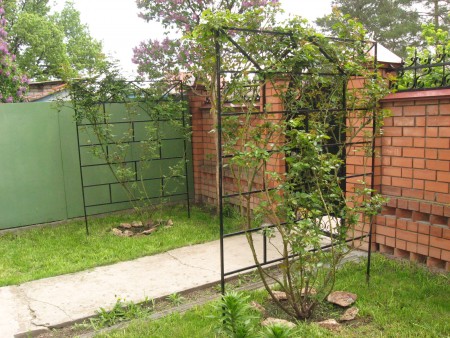

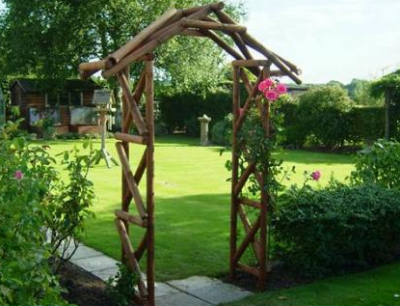
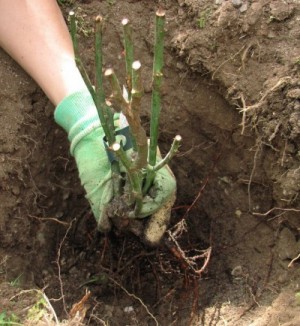

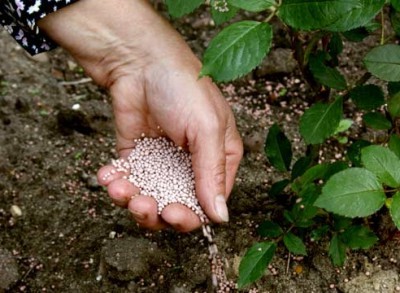
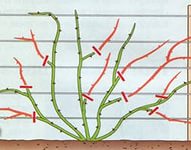

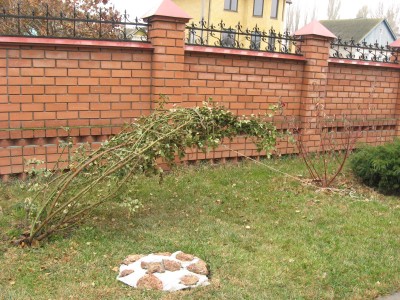
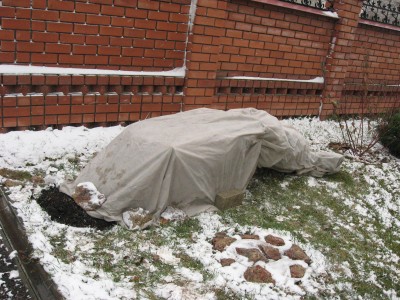

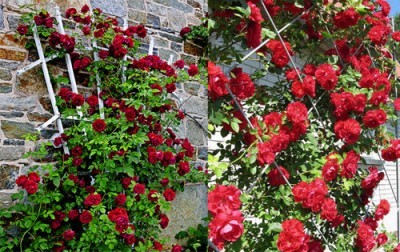

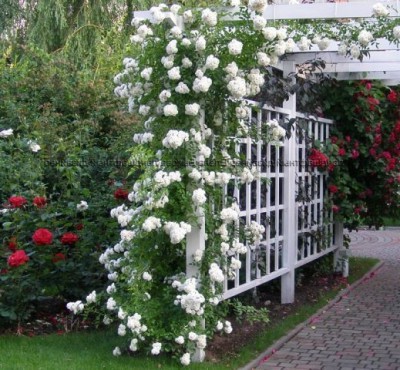
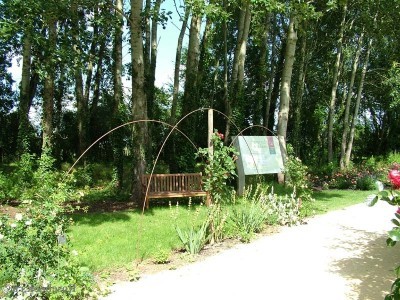
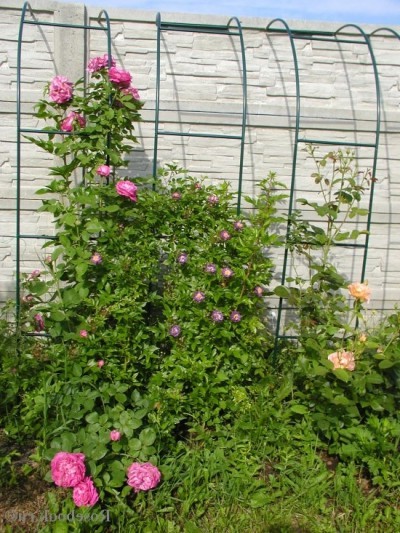

 (19 ratings, average: 4,84 out of 5)
(19 ratings, average: 4,84 out of 5) CUCUMBERS NEVER GET SICK, I'VE BEEN USING ONLY THIS FOR 40 YEARS! I SHARE A SECRET WITH YOU, CUCUMBERS ARE LIKE THE PICTURE!
CUCUMBERS NEVER GET SICK, I'VE BEEN USING ONLY THIS FOR 40 YEARS! I SHARE A SECRET WITH YOU, CUCUMBERS ARE LIKE THE PICTURE! You can dig a bucket of potatoes from each bush. Do you think these are fairy tales? Watch the video
You can dig a bucket of potatoes from each bush. Do you think these are fairy tales? Watch the video
 How our fellow gardeners work in Korea. There is a lot to learn and just fun to watch.
How our fellow gardeners work in Korea. There is a lot to learn and just fun to watch. Eye trainer. The author claims that with daily viewing, vision is restored. They don't charge money for views.
Eye trainer. The author claims that with daily viewing, vision is restored. They don't charge money for views. A 3-ingredient cake recipe in 30 minutes is better than Napoleon. Simple and very tasty.
A 3-ingredient cake recipe in 30 minutes is better than Napoleon. Simple and very tasty. Therapeutic exercises for cervical osteochondrosis. A complete set of exercises.
Therapeutic exercises for cervical osteochondrosis. A complete set of exercises. Which indoor plants match your zodiac sign?
Which indoor plants match your zodiac sign? What about them? Excursion to German dachas.
What about them? Excursion to German dachas.
Our climbing rose froze this winter. She was so beautiful, she was already five or six years old. The hand does not rise to uproot such a beauty. Maybe there is still hope that it will move away from the root?
If it goes away, then most likely the rosehip will grow back. After all, almost all roses are sold grafted onto rose hips.
excellent article, very complete description. Thank you, I highlighted a lot of interesting information for myself. highlighted important and interesting facts for a novice gardener. I will plant and care for my beauties thanks to your advice. I hope everything works out.
Irina, I am very glad that the article was useful to you. I am sure that your roses will grow healthy, beautiful, bloom for a long time and delight their owner. Happy Holidays to you!
Please tell me how to distinguish a climbing rose from a ground cover rose. I bought very small plants. Thank you in advance.
Irina, in both groups of these roses there are a lot of varieties, but in most cases, ground cover roses have thinner shoots and shorter internodes than climbing roses.
I read it and my soul came to life! Thank you!!
But I don’t understand how to cover them in the fall? More precisely, do they need to be torn off from the support?? They curl and cling to the arch, how can you do this without damaging the rose?
Anastasia, for shelter for the winter, climbing roses must be removed from their supports and laid on the ground. This is not at all easy to do, they curl, cling, and are very prickly. To simplify the task, in the spring you need to tie the shoots carefully, on one side of the support, and not intertwine them between the rods of the arch so that they hold on themselves. Of course, there are also losses: one shoot breaks, another has to be cut off. All owners of such roses face such difficulties and everyone copes with it. Everything will definitely work out for you too. Good luck.
So should you prune a rose for the winter or not* and how to do it. This is our second year.
Olga, there is no need to prune climbing roses for the winter. Especially young people like you. Just gently press the shoots to the ground and cover them. Perform pruning in spring. Distribute the shoots evenly and infrequently on the trellis, and remove all the “extra” shoots, trim the long ones.
please tell me what engine this site is made on
On WordPress
Namely, what varieties would you recommend for growing climbing roses?
Which of them bloom more and longer? Thank you in advance
Aigul, now there are many new, interesting varieties of roses that bloom for a long time and profusely. I like Red Eden, Elfe, Polka, Don Juan. These varieties have large, full flowers and long-lasting blooms.
For some reason our climbing roses don’t grow in length
Marina, climbing roses are different. Some varieties do not grow more than 2 meters. But if they haven’t even grown up to a meter, maybe they’re not climbing?
Good afternoon Yes, you are probably right, the roses turned out to be not climbing roses. Two years ago we bought two “climbing” roses, they bloomed all summer, they didn’t even grow to a meter (((The next year we transplanted them into a flowerbed and bought two more climbing roses in cardboard boxes with photos and descriptions in another store, also They bloomed successfully until autumn, but did not grow up to a meter... So there is a beautiful arch for climbing roses without lashes(
Marina, are you really so unlucky two times in a row? Maybe the roses are climbing after all and will grow this year. Although by autumn it should be clear what they are. Climbing shoots are thin and flexible, they themselves look for support.
Good afternoon Please tell me! If a rose seedling is planted in May of this year, is it necessary not to let it bloom all summer?
Tatyana, if the plant develops well, let it bloom, but if it sits in one place and does not want to grow, then it is better to cut off the color.
Thank you!
Thank you for the useful tips on care, it will be very useful especially now, in June, I will take cuttings if it’s not too late
When is the best time to propagate roses from cuttings?
Tatyana, the best time for cutting roses is June.
Please tell me, the roses have bloomed once for more than 5 years, the shoots grow 2.5 meters, but there are no buds. If this is a rosehip, can it have such shoots?
Elena, rosehip shoots grow up to three meters, but rose flowers are very different from rosehip flowers. If your roses bloomed once, then you have seen flowers. It seems to me difficult to confuse them with rose hips. But I can’t tell you why they don’t bloom anymore.
What a wonderful site. I found everything. And everything is very intelligible and understandable.
Hello. I bought a climbing rose in the spring. In the summer it grew, but it turned out that two branches were thin, twisting and had to be tied, like climbing ones, to a support, and four branches were straight with a thick, stable stem. One bud has started and bloomed. What kind of rose is this, is it a climbing rose or not?
Irina, climbing roses often throw out such thick shoots. So don't worry, the rose is most likely a climbing rose.
We planted climbing roses, they have been graying for a month now, not even a single leaf or bud. What's wrong with them? Is the top drying out?
Victoria, I had similar cases.I put a black plastic garbage bag on the seedling. Just don’t tie it to the rose stem, but straighten it and press it down with bricks, so that moisture from the ground collects under the bag and there is increased humidity there. In a word, you create the same conditions as for a cutting. If you have ever taken cuttings from plants, then you should know how this is done. This helps a lot. Of course, a month is a long time, the plants could have already died, but it’s definitely worth a try.
I liked the idea with the black bag. If I buy rose seedlings in the spring and immediately cover them with bags as you said, then they will have a better chance of taking root.
Yes, Marina. If you cover the seedlings with bags when planting, they will grow faster.
In February, I bought a climbing rose in a capsule. Before planting, I decided to keep it in the basement - it was cool and humid there. But it began to grow and sprouted. How to preserve and care for it before planting?
Svetlana, since the rose has begun to grow, transplant it into a pot, place it on the window and care for it like you would a pet. The window sill is not the best place for a climbing rose, but it will bear with it for a month and a half, and then go into the garden. Just make sure that the spider mites don’t eat it, they love roses.